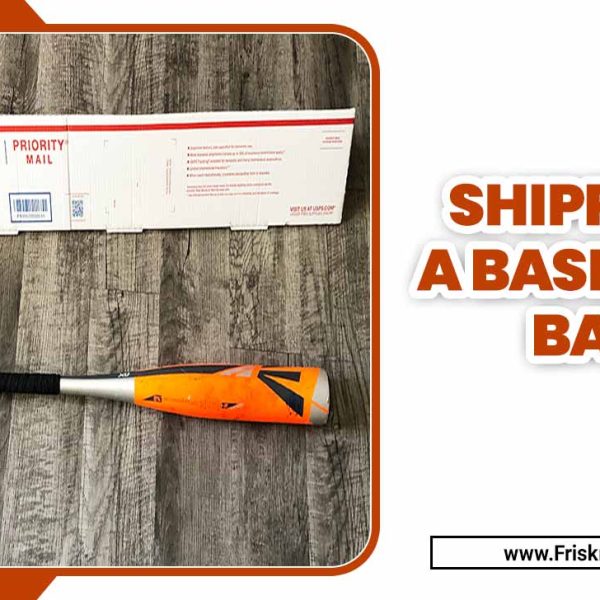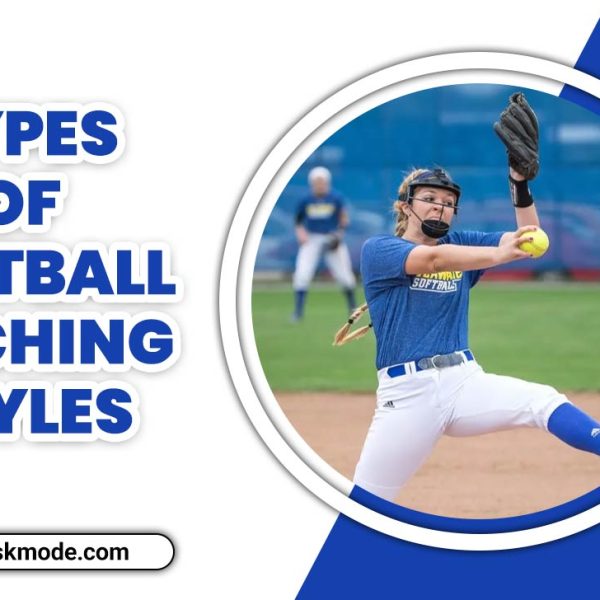For kids wanting to join a baseball team, this guide covers everything from finding the right league and understanding playtime rules to essential equipment and basic skills. Get ready to hit a home run with your young slugger’s baseball journey!
Playing baseball is a fantastic way for kids to stay active, learn teamwork, and build lasting friendships. But diving into the world of youth baseball can feel a bit overwhelming for new parents and young players. Where do you start? What gear do you need? How much playing time can you expect? Many families wonder if their child is ready or how to find the best fit. Don’t worry, we’ve got you covered! This guide will break down everything you need to know, step-by-step, so your child can enjoy the game and develop their skills with confidence. We’ll explore how to find a team, what to expect on the field, and the gear that makes playing safe and fun.
Choosing the Right Baseball Team for Your Child
Finding the perfect baseball team is the first big step. It’s not just about the sport; it’s about finding an environment where your child can learn, grow, and have fun. Consider these factors:
1. League Levels and Types
Youth baseball leagues vary greatly. Understanding the differences will help you choose the best fit.
Little League Baseball: This is perhaps the most well-known youth baseball organization, offering structured programs for a wide age range. They have divisions like Tee Ball, Minor League, Major League, and more. Little League emphasizes community involvement and has a strong focus on sportsmanship. You can find local leagues through their official website.
Cal Ripken, Sr. League/Babe Ruth League: These organizations also offer comprehensive baseball programs for various age groups, often with a slightly more competitive edge than some Little League divisions. They provide opportunities for players to advance through different levels of play.
PONY Baseball and Softball: PONY (Protect Our Nation’s Youth) baseball offers a unique structure where players “map” based on their birth date, rather than strict age brackets. This can lead to more evenly matched teams.
Local Recreational Leagues: Many towns and cities have their own park and recreation departments that run baseball leagues. These are often more casual, less expensive, and focus on participation and fun. They’re a great starting point for younger children or those new to the sport.
Travel Ball / Competitive Leagues: These leagues are typically for older, more experienced players who want a higher level of competition. Teams often practice more frequently, travel to different towns for games, and may have higher registration fees. For a beginner, it’s usually best to start with a recreational or Little League program.
2. Age and Skill Appropriateness
Leagues usually group players by age. However, consider your child’s individual development.
Tee Ball (Ages 4-6): This is designed for the youngest players. The ball is hit off a stationary tee, focusing on basic stances, hitting, running the bases, and fielding. It’s all about introducing the game in a fun, low-pressure way.
Coach Pitch (Ages 5-8): Once kids can stand at the plate, coach pitch is the next step. The coach pitches the ball to their own team, making it easier for batters to make contact. This phase builds on Tee Ball skills and introduces throwing and catching.
Kid Pitch (Ages 7-12+): As players advance, they begin to pitch to each other. This requires more advanced skills like accuracy, velocity, and understanding the strike zone.
Intermediate/Junior/Senior Divisions: These divisions, often found in leagues like Little League or Babe Ruth, cater to older players (12-18) and play on larger fields with rules closer to professional baseball.
3. Coaching Philosophy and Team Culture
The coaches and the overall team atmosphere are crucial.
Look for Positive Coaching: Are coaches focused on development, sportsmanship, and effort rather than just wins and losses? Do they encourage all players?
Team Balance: Does the team seem to have a good mix of skill levels? A team that’s too dominant might not offer as much learning for a beginner.
Parent Involvement: How do parents interact with the team? A supportive, positive environment is key.
4. Practicing and Game Schedule
Consider your family’s availability.
Time Commitment: How many practices per week? How many games? Younger leagues typically have fewer commitments.
Location: Are practices and games conveniently located?
Understanding the Basics of Baseball Gear for Kids
Proper equipment is essential for safety and performance. For young players, it’s important to get gear that fits well and is designed for their age and size.
1. The Baseball Bat
Choosing the right bat is exciting for young players! Here’s what to look for:
Material: Bats are typically made of aluminum alloy or composite materials. Some younger leagues might still use wood bats or have specific restrictions.
Aluminum Alloy: More durable and often more affordable. They offer good pop (how well the ball comes off the bat).
Composite: Lighter swing weight and can offer a larger “sweet spot” (the area of the bat that transmits energy most effectively to the ball). Composite bats often require a “break-in” period.
Size and Weight: This is critical. A bat that’s too heavy will hinder a child’s swing speed and control.
Length: A good rule of thumb is that when your child holds the bat by the handle, they should be able to extend their arm straight out to the side, and the end of the bat should be about 2-3 inches from their fingertips. Another test: have them hold the bat perpendicular to their body with one arm. If they can hold it comfortably parallel to the ground for about 30 seconds, it’s likely a good weight.
Weight (Drop Weight): The “drop weight” is the difference between the bat’s length and its weight (e.g., a 28-inch bat weighing 18 ounces has a drop weight of -10). For young players, a higher drop weight (meaning lighter bat) is generally recommended, often between -8 to -13.
Certification/Regulations: Check your league’s rules! Many youth leagues, especially those affiliated with Little League, require bats to have specific certifications like the USABat or USA Baseball standard. Older leagues may have different regulations. Make sure the bat you buy meets these standards.
2. The Baseball Glove (Glove/Mitts)
A good glove is an extension of a player’s hand.
Type:
Infielders’ gloves: Smaller and lighter, with a shallower pocket, allowing for quicker transfers from glove to hand.
Outfielders’ gloves: Larger with a deeper pocket to help catch fly balls.
First baseman’s mitt: Unique, large, U-shaped mitt designed for scooping throws.
Catcher’s mitt: Heavily padded, no finger stalls, designed to catch fast pitches.
Size: Glove sizing is usually measured in inches, from the heel to the top of the index finger. Youth gloves can range from 9 to 12 inches. A good fit means the child can close the glove around a ball. It should feel snug but not overly tight.
Material:
Leather: The most common and durable material. It requires a “break-in” period to become pliable and form a good pocket.
Synthetic leather: Often less expensive and requires little to no break-in, but may not last as long.
Breaking in a Glove: This is a process of making the leather soft and forming a usable pocket. You can use glove oil or conditioner, tap the pocket with a mallet, and even have a coach or parent place a ball in the pocket and wrap it tightly overnight.
3. Baseball Helmet
Safety is paramount. Every player who steps up to bat or runs the bases needs a helmet.
Fit: The helmet should fit snugly but comfortably. The straps should be adjustable. When worn, the helmet should not wobble, and the brim should sit level on the head, typically just above the eyebrows.
Protection: Look for helmets that meet safety standards (e.g., ASTM F1066). Many helmets come with built-in faceguards for players in specific leagues or divisions.
Ear Flap: Most youth batting helmets have ear flaps for added protection.
4. Baseball Cleats
Cleats provide traction on the field.
Material:
Metal: Offer excellent grip but are often not allowed in younger leagues due to safety concerns.
Molded Plastic/Rubber: The standard for most youth leagues. They offer good traction without the risk of sharp points.
Fit: Cleats should fit like regular athletic shoes – snug but with a little room for thicker socks. They shouldn’t cause blisters or discomfort during play.
5. Uniforms and Protective Gear
Beyond the basics, other equipment plays a role.
Baseball Pants: Usually a sliding-style pant with padding.
Baseball Socks: Special socks that often come up to the knee.
Sliding Pad/Shorts: Some players wear these under their pants for extra protection when sliding.
Cup: Strongly recommended for all players, especially those playing positions like catcher or pitcher, and highly recommended for batters and base runners.
Mouthguard: Essential for protecting teeth and gums, especially for players in more advanced leagues or positions.
Catcher’s Gear: This is a specialized set including a mask, chest protector, and shin guards. It’s bulky and designed for safety behind the plate. If your child is interested in catching, they’ll need this equipment.
Essential Baseball Skills for Young Players
Learning the fundamental skills will give your child a solid foundation.
1. Hitting
The goal is to make contact and drive the ball.
Stance: Feet shoulder-width apart, knees slightly bent, weight balanced.
Grip: Hold the bat with both hands, knuckles aligned (weak hand on top for right-handed hitters, strong hand on bottom). Don’t grip too tightly.
Swing: A smooth, level swing is key. Focus on keeping your eye on the ball from pitch to contact. The swing involves a step forward, turning of the hips and torso, and a follow-through.
Eye on the Ball: This is the golden rule. Track the ball from the pitcher’s hand all the way to the bat.
2. Fielding
Catching the ball cleanly is just as important as hitting it.
Ready Position: Knees bent, glove out in front of your body, mitted hand open, and glove side towards the ball.
Tracking the Ball: Watch the ball into your glove.
Securing the Ball: Use your bare hand to cover the ball in the pocket of your glove.
Crow Hop/Transfer: For throws, practice quickly transferring the ball from your glove to your throwing hand and making an accurate throw.
3. Throwing
Accuracy and arm strength develop over time.
Grip: Grip the ball across the seams with your index and middle fingers.
Arm Motion: A fluid “L” shape with the elbow bent. Bring the arm forward, snapping the wrist at release.
Follow Through: Crucial for accuracy and preventing injury. Let your arm naturally continue its motion across your body.
Footwork: Step towards your target with your opposite foot (left foot for right-handed throwers).
4. Base Running
Running the bases safely and efficiently is key.
Leadoffs: Learning to get a good “lead” off a base, balanced and ready to run.
Rounding Bases: Don’t run in a straight line; round the bases slightly to maintain momentum.
Sliding: Learn different types of slides (feet-first, head-first) to avoid tags safely.
Playing Time and Expectations
A common question for parents is about how much playing time their child will get.
League Rules: Many youth leagues have mandatory play rules, ensuring every child gets a minimum number of innings or at-bats per game. These rules are designed to give all players experience.
Coaches’ Discretion: Within the league rules, coaches often determine player positions and playing time based on skill, practice effort, and game situations.
Setting Realistic Expectations: It’s important for both parents and children to understand that not every player will play every inning at every position. For new players, the focus should be on learning, improving, and enjoying the experience. As skills develop, opportunities often increase.
Communication: If you have questions about your child’s playing time or role on the team, a polite conversation with the coach during a designated time (not during or immediately after a game) is usually appropriate.
Safety First on the Baseball Field
Baseball is a sport with inherent risks, but proper precautions can minimize them.
Proper Gear: As discussed, wearing all the required safety equipment (helmet, cup, mouthguard) is non-negotiable.
Field Safety: Ensure the field is in good condition. Bases should be secure, no large holes or debris.
Warm-ups: Always perform thorough warm-ups before practice and games to prevent muscle strains and injuries. This includes dynamic stretching and light jogging.
Hydration: Especially in warmer weather, ensure players drink plenty of water before, during, and after games.
Coaching Supervision: Young players should always be supervised by coaches during practices and games.
Awareness: Players should be aware of their surroundings – paying attention to the ball, runners, and other players to avoid collisions.
Baseball Drills for Kids to Practice at Home
Reinforcing skills outside of practice can significantly boost development.
1. Tossing and Catching Drill
Goal: Improve hand-eye coordination, accuracy, and glove control.
How-to: Start close to your child and toss the ball back and forth, focusing on making clean catches and accurate throws. Gradually increase the distance as accuracy improves. Encourage soft hands when catching. This is perfect for parents and kids to do together.
2. Batting Practice with Soft Toss or Tee Work
Goal: Develop a consistent swing and better contact.
How-to:
Tee Work: Set up a batting tee at different heights (low, mid, high) and different locations (inside, middle, outside). Have your child practice their swing, focusing on hitting the ball squarely. Ensure they are using a bat that is the correct size and weight for them. Check league requirements for USA Baseball (USABat) standards here: USA Baseball Bat Standards.
Soft Toss: Have a partner kneel to the side of where the batter stands and gently toss the ball underhand towards the batter. This drill helps with tracking the ball and timing the swing.
3. Ground Ball and Fly Ball Fielding Practice
Goal: Enhance fielding technique and confidence.
How-to:
Ground Balls: Roll or hit ground balls towards your child. Focus on getting in front of the ball, keeping their glove on the ground, and using the “alligator mouth” (closing the glove on the ball).
Fly Balls: Hit or toss fly balls. Encourage them to judge the ball’s trajectory, get under it if possible, and catch it clean with two hands.
4. Base Running Drills
Goal: Improve speed, agility, and base running awareness.
How-to:
Home-to-First: Have your child practice running hard through the first base bag.
Rounding Bases: Set up cones and have them practice rounding the bases, maintaining speed.
Imaginary Leads:** Practice taking good leads from each base, staying balanced and ready to advance.
Parent and Coach Q&A: Common Beginner Questions
Here are some frequently asked questions about children playing baseball.
1. How often should my child practice baseball?
For younger players (Tee Ball, Coach Pitch) in recreational leagues, 1-2 practices a week is typical and often sufficient. For older or more competitive players, 2-3 practices might be common. The key is consistency and quality of practice over sheer quantity, especially for younger kids to avoid burnout.
2. What is the most important piece of equipment for a beginner?
The batting helmet and properly fitting glove are arguably the most critical for safety and initial play. A helmet protects from errant pitches or balls, and a good glove makes catching the ball much easier, building confidence.
3. My child is afraid of the ball. What can we do?
This is common! Start with very short distances and soft throws. Use a softer training ball if needed. Gradually increase distance and ball hardness as their comfort grows. Emphasize tracking the ball into the glove. For hitting, start with a tee or a very slow coach pitch, focusing on just making contact. Never force a child who is scared; build confidence slowly.
4. How much “baseball” should my child know when they start?
Absolutely nothing! Most youth leagues, especially at the Tee Ball and Coach Pitch levels, are designed to teach the fundamentals from scratch. Coaches expect beginners and will guide them through every step.
5. What does it mean for a bat to have a USABat certification?
The





